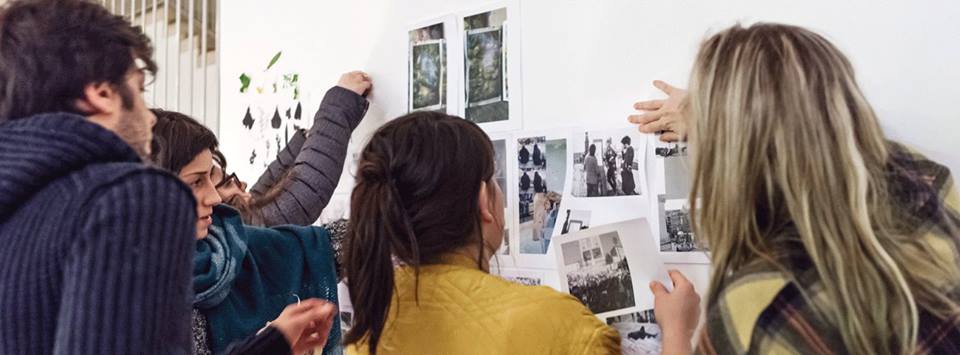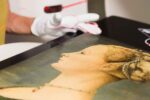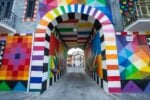Histories Hidden in Plain Sight

Presentazione dei progetti di ricerca dei partecipanti al workshop ‘Histories Hidden in Plain Sight’ con Maria Thereza Alves.
Comunicato stampa
Presentazione dei progetti di ricerca dei partecipanti al workshop 'Histories Hidden in Plain Sight' con MARIA THEREZA ALVES
[english version below]
L’artista Maria Thereza Alves, insieme ai residenti dell’Istituto Svizzero e ai partecipanti, provenienti da differenti città europee, del workshop 'Histories Hidden in Plain Sight', presenteranno al Nuovo Cinema Palazzo di Roma le ipotesi di ricerca intraprese durante la prima settimana di lavoro.
Come sono arrivate le piante a Roma? Da questa domanda ci siamo addentrati nelle complessità storiche di movimenti di cose e persone nella prima settimana, intitolata 'Botanical Evidences of Movement, Migration and Commerce', e mossa dal tentativo di osservare e ridefinire il paesaggio romano partendo dalle narrazioni ufficiali ed arrivando ad altre possibili.
'Histories Hidden in Plain Sight' esplora i paradossi e le frizioni interne alla modernità – in termini etici ed estetici – cercando di aprire spazi inattesi, e possibilità per la critica e per la pratica artistica. La comprensione di questi spazi che potremmo chiamare eterotopi, che esistono cioè sebbene non ancora registrati o riconosciuti, ci porta a scavare nella costruzione del contemporaneo come rappresentazione univoca del reale, e trasformarla in un cantiere per restituire un’immagine nel suo insieme più caotica e più inclusiva del presente.
Partecipano al workshop:
Membri ISR
Francesco Baroni, Ivan Foletti, Gina Folly, Davide Fornari, Céline Hänni, Anne Le Troter, Pauline Milani, Niku Alex Muçaj, Virginie Nobs, Grégoire Oguey, Coralie Rouet, Benjamin Valenza, Hannah Weinberger
Partecipanti
Ezgi Bakçay Çolak, Dayna Desireé Bartoli, Giorgio Bloch, Clément Boudin, Wania Castronovo, Alioscia Castronovo, Seecum Cheung, Anke Dyes, Amalia Marie Fonfara, Alessandro Giannì, Annika Högner, Cecilie Hundevad Meng, Leon Kahane, Sara Lindeborg, Marian Mayland, Matthias Maurer, Inka Meißner, Valentina Nascimben, Samuel Richter, Mari Sanden, Sally Schonfeldt, Hatice Özlem Sarıyıldız, Claire Tenu, Lisa Woite.
Info:
http://studioroma.istitutosvizzero.it/
MARIA THEREZA ALVES (1961, Brasile) è un’artista il cui lavoro interroga le circostanze sociali che diamo per acquisite, e indaga il modo in cui identifichiamo noi stessi e le cose che ci circondano. Negli anni Ottanta Alves ha partecipato alla fondazione del Partido Verde brasiliano. Ha lavorato in diversi contesti ambientali tra cui Pantanal in Brasile, Matsunoyama in Giappone, Guangzhou in Cina, Amatlan nel Messico centrale, Fadiouth in Senegal, e in diverse parti dell’Europa. Ha esposto alla Triennale di Guangzhou, a Manifesta 7, alla Biennale di Atene, alla Biennale di Lione e a documenta 13.
____________________________
The artist Maria Thereza Alves, together with the fellows of Istituto Svizzero di Roma and participants, from many European cities, of the workshop 'Histories Hidden in Plain Sight' will present at the Nuovo Cinema Palazzo in Rome the research hypotheses sprung in the first week of work.
How have these plants arrived in Rome? In the first week of work entitled 'Botanical Evidences of Movement, Migration and Commerce', from this question, we delved into the historical complexities of movements of people and things in an attempt to observe and redefine the Roman landscape departing from official narrations and arriving to other potential stories.
'Histories Hidden in Plain' Sight explores these tensions and frictions – in both ethical and aesthetical terms – seeing how they can open up unexpected spaces and possibilities, both in critical and artistic work. The understanding of such spaces, let us call them heterotopic, for they already exist even if they are not yet registered nor recognised, returns us to considering the construction of the contemporary as a unilateral representation of reality. Digging into this construction, transforming it into a building site, means to re-open the languages that have tended to obfuscate an altogether more messy and inconclusive rendering of the present.
With
ISR fellows: Francesco Baroni, Ivan Foletti, Gina Folly, Davide Fornari, Céline Hänni, Anne Le Troter, Pauline Milani, Niku Alex Muçaj, Virginie Nobs, Grégoire Oguey, Coralie Rouet, Benjamin Valenza,
Hannah Weinberger.
Participants: Ezgi Bakçay Çolak, Dayna Desireé Bartoli, Giorgio Bloch, Clément Boudin, Wania Castronovo, Alioscia Castronovo, Seecum Cheung, Isaline Deléderray-Oguey, Anke Dyes, Amalia Marie Fonfara, Ronnie Fueglister, Alessandro Giannì, Annika Högner, Cecilie Hundevad Meng, Leon Kahane, Emmanuelle Lainé, Sara Lindeborg, Marian Mayland, Matthias Maurer, Inka Meißner, Valentina Nascimben, Samuel Richter, Mari Sanden, Sally Schonfeldt, Hatice Özlem Sarıyıldız, Claire Tenu, Lisa Woite.
Info:
http://studioroma.istitutosvizzero.it/
MARIA THEREZA ALVES (1961, Brasile) is an artist whose work questions the social circumstances we take for granted and looks at how we identify ourselves, and the things around us. In the 1980s, Alves co-founded the Green Party of Brazil. She has worked in the Pantanal swamps of Brazil, the mountain village of Matsunoyama in Japan, the industrialized mega-port of Guangzhou in China, the village of Amatlan in central Mexico, the agricultural village of Fadiouth in Senegal and throughout Europe. She has exhibited in the 3rd Guangzhou Triennal, Manifesta 7, the 2nd Athens Biennal, the 10th Lyon Biennal and documenta 13.



